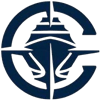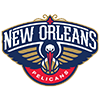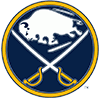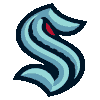This marks the final installment of this year's top 10 prospect rankings in each organization, concluding with the teams in the A.L. East. These rankings will be updated throughout the season on RotoWire.com when players switch organizations, lose their rookie eligibility, or when a player's development dictates a change in where they are ranked within their team's system.
Please feel free to start a dialogue in the comments section below, or @RealJRAndersonon Twitter.
Rank, Name, Position, Age On 4/1/16, Projected Level For Start Of 2016
BALTIMORE ORIOLES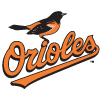
1. Jomar Reyes, 3B, 19, High-A
2. Trey Mancini, 1B, 24, Triple-A
3. Chance Sisco, C, 21, Double-A
4. Hunter Harvey, RHP, 21, High-A
5. Dylan Bundy, RHP, 23, MLB
6. Ryan Mountcastle, SS/3B, 19, Low-A
7. Christian Walker, 1B/DH, 25, Triple-A
8. D.J. Stewart, OF, 22, Low-A
9. Parker Bridwell, RHP, 24, Triple-A
10. Chris Lee, LHP, 23, Double-A
Overview:
As is usually the case, the noteworthy names in this system can be counted on one hand. Mancini would have been a lot more interesting if the Orioles hadn't re-signed Chris Davis, but he could still profile as the team's DH in the near future. His production could resemble the good version of Billy Butler, meaning he won't be a game-changer in dynasty leagues, but should be of use in all formats during his peak years. Sisco's hit tool is often raved about, but his lack of impact power means
This marks the final installment of this year's top 10 prospect rankings in each organization, concluding with the teams in the A.L. East. These rankings will be updated throughout the season on RotoWire.com when players switch organizations, lose their rookie eligibility, or when a player's development dictates a change in where they are ranked within their team's system.
Please feel free to start a dialogue in the comments section below, or @RealJRAndersonon Twitter.
Rank, Name, Position, Age On 4/1/16, Projected Level For Start Of 2016
BALTIMORE ORIOLES
1. Jomar Reyes, 3B, 19, High-A
2. Trey Mancini, 1B, 24, Triple-A
3. Chance Sisco, C, 21, Double-A
4. Hunter Harvey, RHP, 21, High-A
5. Dylan Bundy, RHP, 23, MLB
6. Ryan Mountcastle, SS/3B, 19, Low-A
7. Christian Walker, 1B/DH, 25, Triple-A
8. D.J. Stewart, OF, 22, Low-A
9. Parker Bridwell, RHP, 24, Triple-A
10. Chris Lee, LHP, 23, Double-A
Overview:
As is usually the case, the noteworthy names in this system can be counted on one hand. Mancini would have been a lot more interesting if the Orioles hadn't re-signed Chris Davis, but he could still profile as the team's DH in the near future. His production could resemble the good version of Billy Butler, meaning he won't be a game-changer in dynasty leagues, but should be of use in all formats during his peak years. Sisco's hit tool is often raved about, but his lack of impact power means he will need to stick at catcher for him to be valuable in mixed leagues. After watching him in the Arizona Fall League, I think he can make it as a catcher, and there's a chance he could be ready to step in when Matt Wieters' contract is up at the end of the year. From a pure talent standpoint, Harvey and Bundy would be in the top three, but I have little faith in either pitcher's long-term durability, and Bundy's lack of options really puts a wrench in his short-term development. Harvey is supposedly fully healthy, but he has thrown just 113 professional innings since being drafted in 2013, and he has not yet pitched at High-A, so there is a lot of development needed, and it would be surprising to see him throw 100 innings this season. Bundy is likely to spend most of the year pitching in relief, but he seems like a long shot for saves, given the Orioles' bullpen depth. Given the gaps in his development, his health issues since being drafted, and his spot on the 25-man roster, it is hard to envision a scenario where he has a prolonged run as a starting pitcher anytime soon. The last five names on this list could easily be excluded or switched around in order. To that end, I would avoid the final five names on this list in dynasty drafts this year. Walker could become rosterable at some point in really deep leagues if he can pry the DH job away from whoever has it at the big league level this summer, but he is likely to perform like a replacement-level player. If Lee's uptick in velocity last season leads to more whiffs in 2016, he could move up the list, as could Stewart or Mountcastle if they have impressive first full seasons in the organization, but the upside is limited among the bottom half of this top 10.
Most Upside:Jomar Reyes - The young, hulking Dominican is the big prize in this system, as he has the potential to hit for a high average with 30-homer power, which will play even if he moves to first base long term. He slashed .278/.334/.440 as an 18-year-old at Low-A last year, which is incredibly impressive. Once his power starts showing up more regularly in games, his dynasty league stock will explode. In fact, he's on the same trajectory as Rafael Devers, with just a tad less upside offensively, and yet Devers was already included on one industry top-10 list this offseason, so to say Reyes is under the radar is an understatement. This spring will be the last opportunity to get him at a discount.
Best Bet For 2016: Dylan Bundy - This would have been Walker's spot prior to the Pedro Alvarez signing, but now it looks like the Orioles are completely set at first base and DH. Bundy probably won't make 10 starts, or even five starts for the O's this year, but it's possible that they can stretch him out as the season progresses. It's probably not even worth a $1 bid in most formats, but Bundy should definitely be monitored in deeper leagues in case it looks like he is getting ready to join the rotation. Odds are, however, that he will either stick in the bullpen for most of the year or get hurt at some point relatively early on.
BOSTON RED SOX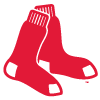
1. Yoan Moncada, 2B, 20, High-A
2. Rafael Devers, 3B, 19, High-A
3. Andrew Benintendi, OF, 21, High-A
4. Anderson Espinoza, RHP, 18, Low-A
5. Michael Kopech, RHP, 19, High-A
6. Brian Johnson, LHP, 25, Triple-A
7. Sam Travis, 1B, 22, Triple-A
8. Luis Alexander Basabe, OF, 19, Low-A
9. Wendell Rijo, 2B, 20, Double-A
10. Nick Longhi, OF, 20, High-A
Overview:
No system in baseball has a more talented top five than Boston, which is pretty incredible considering they traded away two top-50 prospects in the Craig Kimbrel deal. Devers could be a DH long term, but he is skilled enough with the bat that he would still be a top-50 player in fantasy if he approaches his ceiling. It's hard to say if a .320 season or a 30-homer season is more likely, but the fact that both are in play makes Devers a surefire top-20 prospect in baseball. Benintendi could be the first position player from last year's draft to reach the majors this season if he hits as expected, which puts Rusney Castillo and Jackie Bradley Jr. on notice. He will likely be more batting average than power/speed, but he should still hang double-digit homers and steals in his peak years, which should be accompanied by a high average and the runs and RBI that come with batting high in the order. Espinoza has SP1 starter upside and Kopech has SP2 upside, although both pitchers are at least a couple years from contributing in the big leagues. Espinoza has a dazzling arsenal with three potentially plus pitches, but his slight frame and inexperience in full-season leagues make him a very high-risk investment with a potentially huge payoff. Kopech's recent incident where he broke his throwing hand in an altercation with a teammate is enough of a red flag to drop him several spots in the top-200, but he remains a top-100 prospect in the game. Travis profiles as more of a corner infield option than a starting first baseman in mixed leagues, but he should be big-league ready by 2017. Basabe is a straight up lottery ticket, as even his biggest supporters know it's not a lock that he'll hit enough to profile as an everyday player. The tools are off the charts, however, so he should still be targeted in deeper dynasty league drafts this offseason. Rijo is fairly close to the big leagues, and should hit enough to at least be a useful middle infield option. Longhi is still working on getting his raw power to show up consistently in games, but he has one of the better bats in the system. Michael Chavis would rank 11th in the system, and could be swapped in on this list for Rijo or Longhi, but the strikeout issues are just a little too glaring right now.
Most Upside:Yoan Moncada - Moncada hasn't even reached High-A and he is already a top-five second baseman in dynasty leagues, which says a lot about the position, but also a lot about Moncada's upside and the anticipation of an expedited pace through the system. The speed he showed at Low-A last year exaggerates what he'll be able to do in the big leagues, but it's still easy to envision 30-plus steals in a full season. Pair that with a plus hit tool and the projection for plus power down the road and Moncada could be an annual top-10 pick in fantasy leagues during his peak years. His glove at second base is probably the worst part of the profile, so it is possible he could move to the outfield long term, which would obviously ding his fantasy upside a bit. Regardless of where he plays, it would not be surprising for him to be making an impact in the majors by the summer of 2017.
Best Bet For 2016:Brian Johnson - The 25-year-old southpaw doesn't have much buzz in prospect circles, given his age and lack of an elite ceiling, but he could make 20-plus starts for the Red Sox this year. I would take the over on a 4.00 ERA in that scenario, but there's a chance he could outperform that while offering a 7.5 K/9 and gathering seven or eight wins, which would make him useful in deeper leagues. He probably won't make the rotation out of camp, but if Joe Kelly struggles or Clay Buchholz gets hurt, Johnson will be among the first pitchers at Triple-A to be considered for a promotion.
NEW YORK YANKEES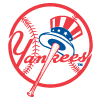
1. Jorge Mateo, SS, 20, High-A
2. Aaron Judge, OF, 23, Triple-A
3. Gary Sanchez, C, 23, MLB
4. Dustin Fowler, OF, 21, Double-A
5. Wilkerman Garcia, SS, 17, Short season
6. James Kaprielian, RHP, 22, High-A
7. Tyler Wade, SS, 21, Double-A
8. Ian Clarkin, LHP, 21, High-A
9. Chris Gittens, 1B/DH, 22, High-A
10. Rob Refsnyder, 2B, 25, Triple-A
Overview:
The four hitters at the top of this system each bring either plus speed or plus power to the table, and the hit tools are solid enough that all four project as everyday players. Judge needs more seasoning at Triple-A, but scouts marvel at his ability to make consistent contact despite being six-foot-seven and having the physique of an NFL tight end. He is firmly blocked at the big league level, so it would require several injuries to get him an everyday job in 2016. Fowler was the organization's breakout hitter of 2015, showcasing an early ability to square up breaking balls to pair with plus speed that will allow him to be an everyday center fielder in a couple years. He may only hit 10-12 homers in his prime, but the overall package could resemble what Adam Eaton is expected to produce this season, so don't write off Fowler from a fantasy perspective. Garcia is exciting, but he's forever away, and the Yankees have other shortstop options ahead of him in the system, so he should be brought along slowly. Kaprielian is expected to move quickly, and if there is an open spot in the rotation in the second half of the season, he could be one of the first pitchers from last year's draft to reach the majors. A 2017 arrival is more realistic, however. What he offers in proximity he lacks in upside, and probably maxes out as a mid-rotation starter. Wade offers excellent speed from the left side, but it is unclear if he has the hit tool or the defense to profile as an everyday player. However, Wade could beat Mateo, Garcia and the glove-first shortstop they selected with the 30th pick in last year's draft, Kyle Holder, to the big leagues, so he may get the chance to prove himself in 2017 if Didi Gregorius struggles. Clarkin is my favorite arm in the system, but last year's elbow injury sidelined him all season and really stunted his development, and he pitched quite poorly in the AFL. The Yankees will probably handle him with kid gloves this year, and let him loose in 2017. A scout I talked to said Gittens has more raw power than Judge, and he is my pick to break out this year the way Fowler did in 2015. He's a massive human, and will be confined to first base or DH, but if the power shows up in games at High-A and Double-A the way it did in rookie ball last year, he will be a coveted asset in dynasty leagues this time next year. Gittens isn't a known commodity, so he can just be watched in most dynasty leagues right now, but it will be time to scoop him up if he gets off to a hot start this year. The organization made their thoughts about Refsnyder pretty clear when they acquired Starlin Castro, and while I think Refsnyder's bat plays at second base, his glove is the reason he is not viewed as an everyday option. Leonardo Molina and Carlos Vidal didn't make the list, but are worth keeping an eye on in the lower levels. Molina, specifically, is another breakout candidate who has the tools to really improve his stock this season.
Most Upside:Jorge Mateo - The 20-year-old has a chance to be the Yankees' next generational shortstop. He has the makeup and work ethic to be that guy. Everyone knows about the 80-grade speed, but he took steps forward with his glove and his bat last year, and now looks like a cornerstone piece in fantasy and reality. While he'll never hit 20 homers in a season, he won't be a zero in the power department the way prospects like Ozzie Albies and Jose Peraza are. He will likely start at High-A, but a scout I talked to thinks Mateo has the makeup and ability to handle Double-A right away, which would be aggressive, but would also allow him to get a jump start on making adjustments against upper-level pitching. A 2018 debut still seems likely, but it should not surprise anyone if he is forcing the issue sometime next year.
Best Bet For 2016:Gary Sanchez - A scout I talked to said Sanchez's defensive adjustments over the past calendar year have been very exciting, and there are no longer notions within the organization that he won't be able to stick behind the plate. He is ready to be a starting catcher in the majors, but with Brian McCann on board, it will be tough for Sanchez to see enough at-bats to be an impact player this year. Still, with a 50 hit tool and 60-grade game power, he makes for a nice option at the end of drafts for those who want to punt catcher in a two-catcher league. His presence on the 40-man also makes him a prime candidate to see starts at DH if Alex Rodriguez gets hurt.
TAMPA BAY RAYS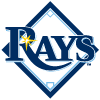
1. Blake Snell, LHP, 23, Triple-A
2. Taylor Guerrieri, RHP, 23, Double-A
3. Jacob Faria, RHP, 22, Triple-A
4. Brent Honeywell, RHP, 21, Double-A
5. Daniel Robertson, SS/2B, 22, Triple-A
6. Casey Gillaspie, 1B, 23, High-A
7. Kevin Padlo, 3B, 19, Low-A
8. Willy Adames, SS, 20, Double-A
9. Garrett Whitley, OF, 19, Short season
10. Jake Bauers, 1B/OF, 20, Double-A
Overview:
This may have been my least favorite system to rank among the systems with an abundance of talent. There are eight players I could reasonably see a case for as the No. 3 prospect in the system, and there are 12 players who could be in the mix for the No. 10 spot. It all boils down to personal preference. Oddly enough, I like the pitchers more than the hitters, and the list clearly reflects that. While I think Robertson, Gillaspie, Padlo, Adames, Whitely, Bauers, Richie Shaffer, Justin Williams, Adrian Rondon and Ryan Brett all have the potential to be everyday players, there's not one guy who I'd bet on being a big league starter for five years. Meanwhile, only an injury would prevent the four pitchers at the top from making it as starting pitchers in the big leagues, and they each have at least mid-rotation upside. Position uncertainty really hurts several prospects in the system. Adames is the hitter in the system who seems to have the most admirers in the industry, but I'm not sold he sticks at shortstop, and I don't think the bat projects well at third base. I love Bauers' hit tool, but he doesn't have the power projection to be even average at first base, and it is unclear if he can handle an outfield corner. Robertson is another guy who may not stick at shortstop and doesn't have the offensive upside to project as an above-average option at the keystone. Whitley, Padlo, Williams and Rondon have a ton of upside, but they are still very young and each has a long road of development ahead. Guerrieri seems like the best bet outside of Snell to one day be viewed as a top-100 player in fantasy, thanks to two plus pitches in his fastball and curveball, although durability concerns still remain despite an excellent 2015 season that put him back on the map in most dynasty leagues.
Most Upside/Best Bet For 2016:Blake Snell - No pitcher improved their stock more in 2015 than Snell. It took him just 89.2 innings to climb from High-A to Triple-A last season, and he continued to show his dominance over nine electric starts at Triple-A that have him poised to contribute early on with the big league club in 2016. Scouts are torn on whether his changeup or his slider is his best secondary offering, but with a plus-plus fastball from the left side and two potentially plus off-speed pitches, it's easy to picture him pitching at the top of a big league rotation. His impressive WHIP in the minors was more of a function of him limiting hits than limiting walks, so it is not a lock that he will be dominant in that category in the majors, but he still profiles very nicely as an SP2, with the floor of an SP3. The Rays have the deepest rotation in the American League, but Snell should still find a way to join the fray by June. After throwing 134 innings last season, he should be able to throw between 160-170 innings this year, with around 100 of those coming in the majors.
TORONTO BLUE JAYS
1. Rowdy Tellez, 1B, 21, Double-A
2. Anthony Alford, OF, 21, Double-A
3. Richard Urena, SS, 20, High-A
4. Conner Greene, RHP, 20, Double-A
5. Vladimir Guerrero Jr., OF, 17, Rookie ball
6. Max Pentecost, C, 23, High-A
7. D.J. Davis, OF, 22, High-A
8. Jon Harris, RHP, 22, Low-A
9. Sean Reid-Foley, RHP, 20, High-A
10. Justin Maese, RHP, 19, Low-A
Overview:
The Blue Jays have traded a lot from their system in recent years, and the results can certainly be seen on the big league roster. What they are left with is a high-floor first baseman in Tellez, a prototypical leadoff center fielder in Alford, a boom or bust shortstop in Urena, a mid-rotation arm in Greene, the best international teenage power bat since Nomar Mazara in Guerrero Jr. and a catcher who can really hit but who also missed all of 2015 with a shoulder injury in Pentecost. The rest of the system either lacks the upside or the floor to be rostered in most dynasty formats. Tellez should hit .270 or .280 with 25-30 homers in the big leagues, which is pretty excellent for a player the Jays nabbed in the 30th round of the 2013 draft. The Jays are in talks with Edwin Encarnacion about an extension, but if that doesn't work out, Tellez could be ready to take over the everyday duties at first base next season. Alford is a player who can get overlooked by dynasty league owners, but it's a profile that actually plays quite well in fantasy. He is essentially Denard Span 2.0, with an elite on-base ability and the speed to profile atop an order. The power will be below average, but he will impact three categories in a couple years. Urena may not stick at shortstop, but a scout I spoke with said the bat will play anywhere if he reaches his potential. His approach needs a lot of work, but he has the tools to be a top-25 prospect this time next year if he can handle his second crack at High-A. Given the Jays' competitive window, it would not be surprising if they used a few more pieces in the system to bulk up the big league roster in deadline deals again this year, so the system could look pretty bare in 2017.
Most Upside:Vladimir Guerrero Jr. - It's really hard to say how Guerrero's hit tool is going to develop, but it's easy to project the power as plus-plus, even as a 17-year-old. Another tricky thing to gauge is how long Guerrero will be in the minors. It could be anywhere from three years to six or seven years. He might be the prospect with the most wide-ranging career outcomes in the game. It would not be surprising if Guerrero was the No. 1 prospect in the game in two years, and it would not be surprising if he was not considered for the top-200 list in two years. Everything is in play. One important thing to note with regard to his father with the same name, Guerrero Jr. won't be a factor on the bases like his father was before him, so it's all power and hit tool driving the fantasy profile.
Best Bet For 2016:Conner Greene - Realistically nobody in the Jays system will make much of an impact in the big leagues this year, but Greene could potentially get a handful of starts in the second half. He popped up last year and established himself as the best remaining pitching prospect in the organization thanks to a very well-rounded arsenal. His fastball is plus, and his secondary pitches are both above average. The command is also at least average, which means Greene projects quite safely as an SP3/4 in the big leagues. He should start the season at Double-A, and he could get to Triple-A by the All-Star break, and at that point he could be just an injury away from getting the call.
















